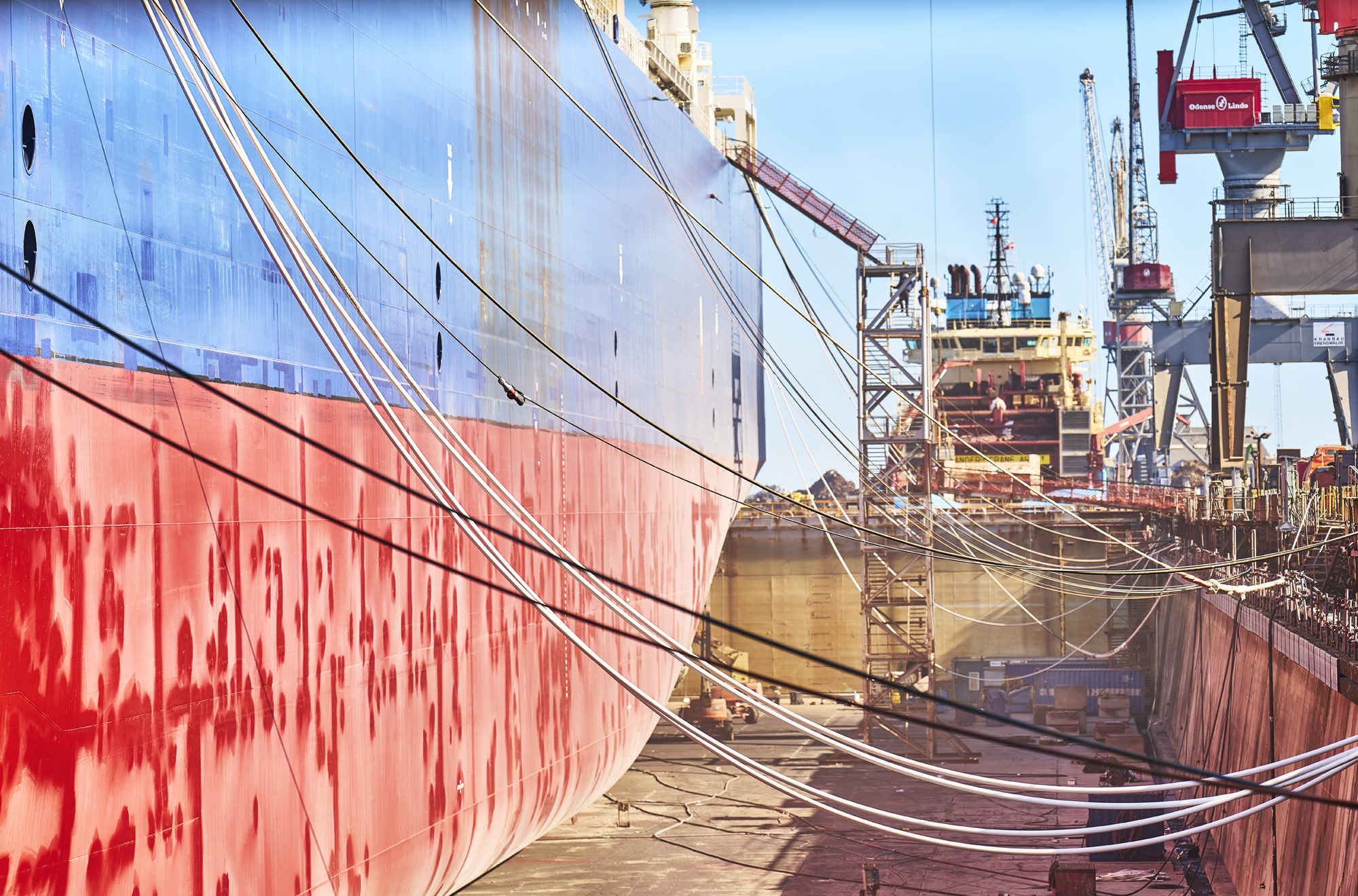
New giant robots could revolutionize Danish shipbuilding
In the research project LSP Ship Factory, researchers from The University of Southern Denmark, together with Danish shipyards and companies, aim to automate ship production using robots and AI. The project is supported by Innovation Fund Denmark and has a total budget of 47 million DKK.
There is a significant shortage of skilled labor in the maritime sector. Not just in Denmark, but in large parts of the world.
However, a solution may be on the horizon. In the future, some of the labor could be performed by robots.
This is at least the ambition of a large new research and innovation project called LSP Ship Factory. The project is a collaboration between researchers from the University of Southern Denmark, Danish Maritime, and a range of shipyards, private companies, and organizations.
Together, over the next 4.5 years, they aim to develop entirely new automation solutions that with the help of giant robots and digital tools could ease the production of everything from ferries to frigates.
- LSP Ship Factory is going to set the stage for an incredibly important development, where automation, digitalization, and robot technology in large-scale production will be combined with shipbuilding. We expect this to provide the maritime industry with entirely new production possibilities, enhance competitiveness, and hopefully contribute to resolving the future shortage of labor, says Jenny Braat, CEO of Danish Maritime.
The development of the automation solutions will take place at the SDU Center for Large Structure Production (LSP).
The center’s physical facilities are currently under construction at the Port of Odense, including a world-unique 10-meter-tall gantry crane equipped with four synchronized robotic arms that can handle not only equipment such as welding gear, paint sprayers, and grinding discs, but also use cameras to test the quality of the performed work, scanners for verification of tolerances, and augmented reality for support in assembly tasks.

- Right now, shipbuilding is largely dependent on manual labor, which is hard to find, and the industry has traditionally been very difficult to automate because it takes place on such a large scale. That is the problem we can solve at LSP, says professor Christian Schlette, head of SDU LSP.
- We have the equipment and expertise to develop, test, and implement the automation solutions so that the companies don't need to invest in very expensive equipment which they then need to adapt to their specific production.
The idea in LSP Factory is that the robots will be able to start producing ship modules and elements directly from a virtual 3D model of the ship with automatic programming. This has the potential to revolutionize the entire maritime sector.
- The goal is that we can increase the degree of automation and digitalization in the production of very large steel elements in Denmark and thereby also strengthen our competitive edge. The intent is to be able to efficiently produce also larger steel sections in Denmark. In addition, the project will be able to reduce the need for labor in areas where we see significant future challenges due to a shortage of qualified employees, says Jenny Braat from Danish Maritime.
- It is incredibly positive with the many member companies participating in the project, which I have high expectations for. We have a sky-high, common level of ambition and look forward to getting properly started.
About the project
LSP Ship Factory is a research and innovation project supported by the Innovation Fund Denmark. It runs for 4.5 years.
There are a total of 15 partners involved in the project: SDU Center for Large Structure Production (LSP), Danish Maritime, Inrotech A/S, FORCE Technology, Simfact ApS, Fayard A/S, Orskov Yard A/S, Karstensens Skibsværft A/S, Søby Shipyard A/S, Tuco Marine Group A/S, SDU Mechanical Engineering, Odense Maritime Technology A/S, Hauschildt Marine A/S, SH Group A/S, and Odense Robotics.
The project has received 33 million Danish kroner in support from the Innovation Fund Denmark and has a total budget of 47 million Danish kroner.